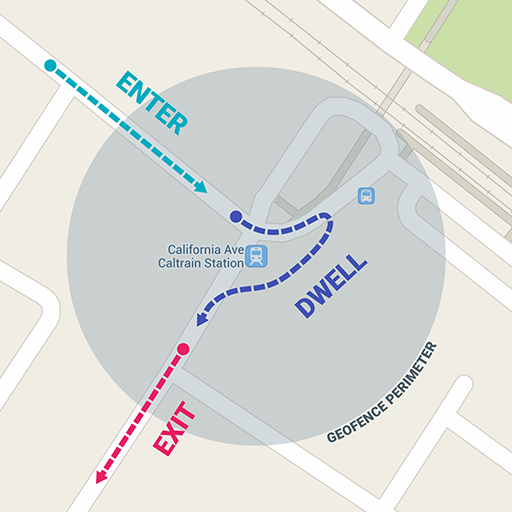In today’s rapidly evolving world of mobile app development, location-based services have become a crucial component of many applications. One powerful tool at the disposal of Android developers is geofencing. In this blog, we will explore the Android geofencing implementation, from understanding the basics to the step-by-step process of integrating geofencing into your Android app.
Geofencing: A Brief Introduction
Geofencing is a technology that uses geographical boundaries to trigger certain actions or events when a user’s device enters or exits predefined areas. These boundaries can be set around physical locations such as stores, airports, or landmarks, making geofencing a valuable asset for businesses aiming to provide location-based services or notifications.
Benefits of Geofencing in Android
Before diving into the implementation process, it’s essential to understand the benefits of using geofencing in Android applications:
- Location-Based Marketing: Geofencing allows businesses to send relevant and timely notifications or promotions to users when they are near their physical stores, increasing the chances of conversion.
- Enhanced User Experience: Users can receive location-specific information, such as event details or local news, improving user engagement.
- Efficient Resource Management: Geofencing helps save device battery by activating location services only when needed.
- Safety and Security: It can be used for safety alerts or tracking, ensuring the well-being of users.
Implementation of Geofencing in Android
Now, let’s dive into the Android geofencing implementation in details. Follow these steps to get started:
Step 1: Add Dependencies
First, add the necessary dependencies to your project’s build.gradle file. You will need the Google Play Services geofencing API.
dependencies {
implementation 'com.google.android.gms:play-services-location:XX.X.X'
}Make sure to replace XX.X.X with the latest version available.
Step 2: Request Location Permission
To use geofencing, your app must have location permission from the user. Request the permission and handle the user’s response.
// Check for location permission and request if not granted
if (ContextCompat.checkSelfPermission(this, Manifest.permission.ACCESS_FINE_LOCATION) == PackageManager.PERMISSION_GRANTED) {
// Location permission granted, proceed with geofencing
} else {
// Request location permission
ActivityCompat.requestPermissions(this, new String[]{Manifest.permission.ACCESS_FINE_LOCATION}, REQUEST_LOCATION_PERMISSION);
}
to know more about permissions read here
Step 3: Create Geofences
Define the geofences you want to monitor, including their locations and triggers. You can create a list of Geofence objects and add them to a GeofencingRequest.
GeofencingRequest.Builder builder = new GeofencingRequest.Builder();
builder.addGeofences(geofenceList);
Step 4: Register Geofences
To monitor the geofences, you need to register them with the LocationServices API.
GeofencingClient geofencingClient = LocationServices.getGeofencingClient(this);
geofencingClient.addGeofences(builder.build(), getGeofencePendingIntent())
.addOnSuccessListener(this, aVoid -> {
// Geofences added successfully
})
.addOnFailureListener(this, e -> {
// Geofences could not be added
});
Step 5: Handle Geofence Events
You’ll need to create a PendingIntent to handle geofence transition events, such as entry or exit.
private PendingIntent getGeofencePendingIntent() {
Intent intent = new Intent(this, GeofenceBroadcastReceiver.class);
return PendingIntent.getBroadcast(this, 0, intent, PendingIntent.FLAG_UPDATE_CURRENT);
}
Conclusion
Geofencing is a powerful feature for Android applications, allowing developers to deliver location-based experiences and notifications to users. By following the steps mentioned in this guide, you can easily do Android geofencing implementation, enhancing user engagement and providing valuable services to your customers.
Don’t miss out on the incredible possibilities that geofencing offers in the world of mobile app development. Explore its potential and create location-aware, user-friendly apps for your audience.
Stay tuned for more app development tips and tricks, and unlock the full potential of your Android app!
